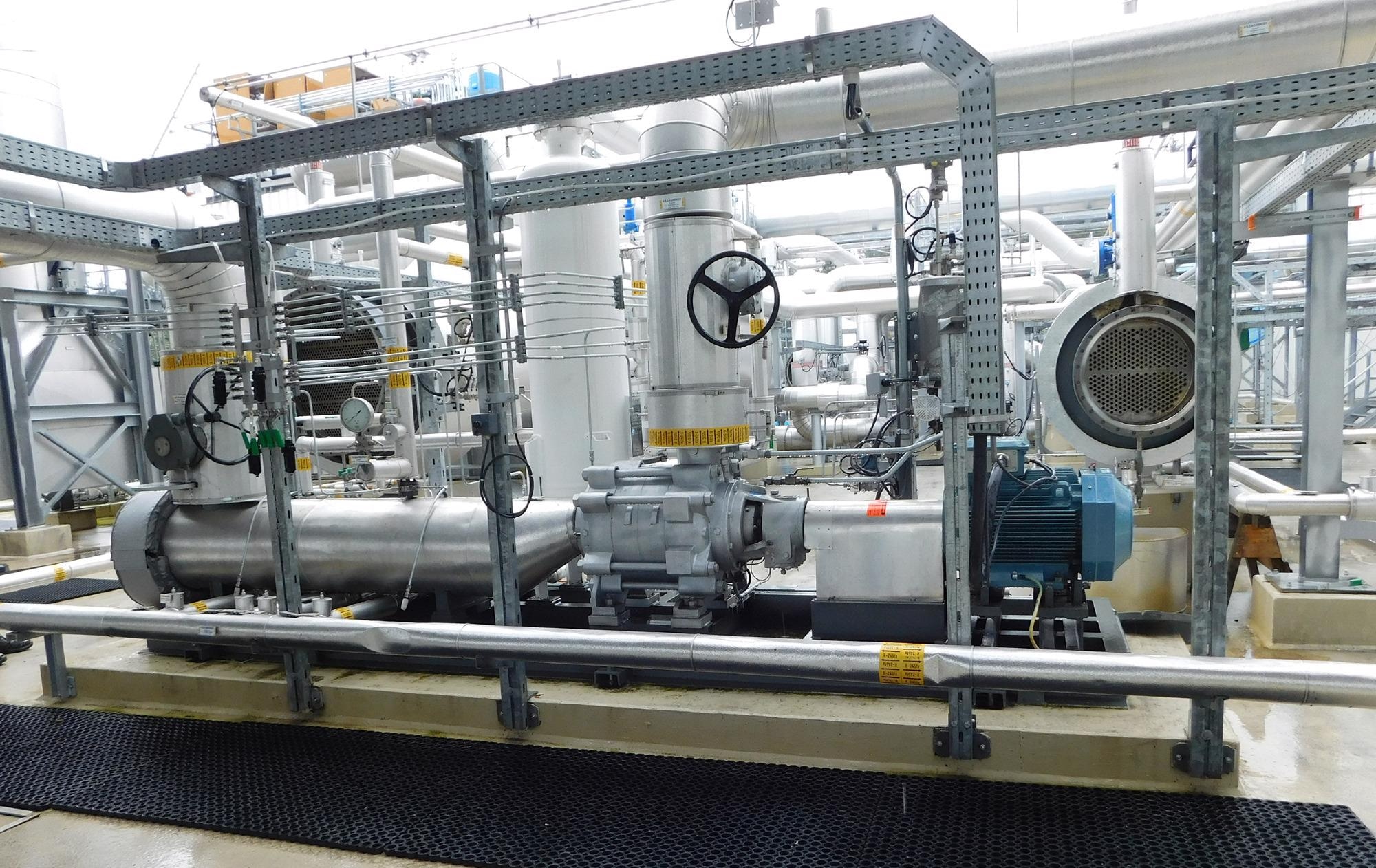May 17 2021
Geothermal energy, in the form of a sustainable energy source, can make its own crucial contribution to decreasing carbon dioxide (CO2) emissions in Germany.
 ORC power plant components at Kirchstockach. Image Credit: Florian Heberle.
ORC power plant components at Kirchstockach. Image Credit: Florian Heberle.
This has been demonstrated by a case study of the Kirchstockach power plant reported by researchers in the Renewable Energy journal. The team was from the Center for Energy Technology (ZET) at the University of Bayreuth.
At ZET, geothermal research is incorporated into the Geothermal-Alliance Bavaria, which has been financially supported by the Bavarian Ministry of Science since 2016. As part of the newly introduced second funding phase, ZET will receive about 500,000 euros.
The Kirchstockach power plant, located to the southwest of Munich, was commissioned back in 2013 and currently generates about 40 GWh of renewable electricity every year.
The latest case study on this Kirchstockach power plant offers the first in-depth life cycle assessment of an actual geothermal power plant located in Germany. Study partners were from the Karlsruhe Institute of Technology and the Martin Luther University of Halle-Wittenberg.
We analysed the provision of electricity by the geothermal power plant in Kirchstockach, particularly from the point of view of CO₂ emissions. In the process, it turned out that if the heat stored in the earth's crust is used to generate electricity, the current state of the art produces less CO₂ than if biogas or photovoltaics are used to generate electricity.
Dr -Ing. Florian Heberle, Study Co-Author and Managing Director, Centre for Energy Technology, University of Bayreuth
To transform the geothermal heat preserved in hot geothermal brine into electricity, Kirchstockach—similar to several other geothermal power plants based in Germany—employs a certain process, called the Organic Rankine Cycle (ORC).
Rather than using water, an organic fluid—a so-called working medium—is mixed with the heat source. And the steam produced in this manner pushes the turbines and is, thus, used to produce electricity.
The case study concluded that the CO2 emissions of a geothermal power plant used solely for producing electricity rely on over one-third of the working medium utilized. In this case, the researchers involved observed a considerable prospect for the much more climate-friendly working of geothermal plants.
If natural refrigerants or hydrofluoroolefins (HFO)—these are novel organic compounds made of hydrogen, fluorine, and carbon—are used instead of the fluids that have been common up to now, CO₂ emissions arising from power generation can be significantly reduced.
Dr -Ing. Florian Heberle, Study Co-Author and Managing Director, Centre for Energy Technology, University of Bayreuth
Dr Heberle has been exploring the optimized application of geothermal energy as a sustainable energy source at the Engineering Thermodynamics & Transport Processes (LTTT) research team for several years.
We very much welcome the far-sighted decision of the Bavarian Ministry of Science to continue funding the Geothermal Alliance Bavaria in its second phase until 2024. For this year alone, a total of € 1.9 million has been made available for research projects aimed at making greater use of geothermal energy for an integrated energy supply from sustainable energy sources. The Center for Energy Technology at the University of Bayreuth will participate in this, especially in the field of heat supply.
Dr -Ing. Dieter Brüggemann, Professor and Director, Centre for Energy Technology, University of Bayreuth
Dr Brüggemann is also the Chair of LTTT.
“Among other things, the focus is on the technical, economic, and ecological investigation of innovative energy systems with high-temperature heat pumps. In addition, we are also cooperating most successfully with the Center of Competence for Combined Heat and Power at OTH Amberg-Weiden, which is being funded in parallel with the Geothermal Alliance,” concluded Dr Brüggemann.
Journal Reference:
Menberg, K., et al. (2021) Environmental performance of a geothermal power plant using a hydrothermal resource in the Southern German Molasse Basin. Renewable Energy. doi.org/10.1016/j.renene.2020.11.028.